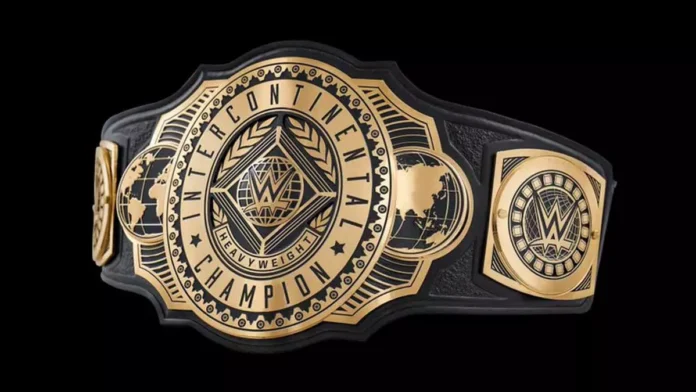In the world of combat sports, championship belts are more than just flashy accessories. They represent the pinnacle of achievement, the culmination of years of hard work and dedication, and a symbol of excellence in a brutal and unforgiving arena. These belts are more than just metal and leather; they are a testament to the blood, sweat, and tears that fighters pour into their craft. In this article, we will delve into the history and significance of championship belts in combat sports, exploring the stories behind the bling.
The Birth of Championship Belts
The concept of championship belts can be traced back to the early days of professional wrestling. In the late 19th century, catch wrestling, a precursor to modern professional wrestling, gained popularity in Europe and the United States. Promoters introduced championship titles to draw in larger crowds and increase the sport’s appeal championship belt. These early championship belts were often simple leather straps with brass plates bearing the champion’s name, but they marked a significant departure from the past.
The first notable example of a championship belt in combat sports history is often attributed to George Hackenschmidt, a professional wrestler from Estonia. In 1905, Hackenschmidt was awarded a title belt after defeating the legendary Frank Gotch in a high-stakes match. This victory and the belt that came with it helped solidify the idea that championship belts were not just for show; they symbolized supremacy in the sport.
Boxing’s Influence
While professional wrestling played a role in popularizing championship belts, it was boxing that truly elevated their status. Boxing had long recognized the importance of titles, with the first world heavyweight champion being crowned in 1885. The practice of awarding championship belts to boxers became more widespread as the sport grew in popularity.
The World Boxing Association (WBA), the World Boxing Council (WBC), and the International Boxing Federation (IBF) are just a few of the major organizations that introduced their own championship belts. These belts became highly coveted, representing not only the championship, but also the prestige and financial opportunities that came with it.
In the world of boxing, the significance of a championship belt cannot be overstated. Fighters spend years climbing the ranks, facing tough opponents and enduring grueling training camps to earn a shot at a title. The championship belt represents the culmination of their journey, and the moment they strap it around their waist is a moment of pure triumph.
Mixed Martial Arts and the UFC
The concept of championship belts has transcended boxing and become a staple in other combat sports, most notably mixed martial arts (MMA). The Ultimate Fighting Championship (UFC), the largest and most prominent MMA organization, has played a significant role in this evolution.
The UFC introduced its own set of championship belts, which are highly sought after by fighters. MMA fighters, often coming from diverse backgrounds such as wrestling, jiu-jitsu, boxing, and Muay Thai, aim to become not just the best in their respective disciplines but also the best in the world. Winning a UFC championship belt is a testament to a fighter’s well-rounded skills and the ability to compete in various combat sports disciplines.
One of the most iconic championship belts in MMA is the UFC’s Octagon-shaped belt. This belt features the company’s distinctive logo and has become a symbol of excellence in the sport. Fighters like Anderson Silva, Georges St-Pierre, and Ronda Rousey have all had the honor of wearing the UFC championship belt around their waist, cementing their legacies in the world of MMA.
The Blood, Sweat, and Tears Behind the Bling
Behind the shiny veneer of a championship belt lies the relentless determination, sacrifice, and adversity that fighters face. The path to championship glory is paved with grueling training sessions, injuries, mental hurdles, and countless hours of dedication. Fighters endure a life of discipline, often adhering to strict diets and training regimens to maintain peak performance.
Moreover, the sacrifices extend beyond the individual fighter. Family members, coaches, and training partners all invest their time and effort to help the fighter reach the pinnacle of their sport. The significance of a championship belt goes beyond the individual; it represents a collective effort and a community that stands behind the fighter.
A Symbol of Legacy
Championship belts are not just symbols of current success; they also carry the weight of history and legacy. Champions often inherit the legacies of those who came before them, and their names become etched in the annals of the sport. For example, in the world of boxing, names like Muhammad Ali, Mike Tyson, and Manny Pacquiao are forever associated with their championship reigns.
In MMA, fighters like Conor McGregor and Khabib Nurmagomedov have left indelible marks on the sport, and their championship belts are not just personal achievements but part of a broader narrative. These belts serve as a link between past, present, and future, preserving the history of the sport while inspiring the next generation of fighters.
The Economic Impact
Championship belts are not only symbols of prestige and honor but also have a significant economic impact replica belts. Champions often enjoy increased exposure, higher fight purses, and lucrative sponsorship deals. They become the faces of their respective sports, drawing in larger audiences and elevating the sport’s overall profile.
The economic impact of championship belts extends beyond the fighters themselves. Promoters, organizations, and sponsors benefit from the aura of championship fights, as they generate substantial revenue through pay-per-view events, ticket sales, and merchandise associated with title bouts.
The Ultimate Goal
In combat sports, the ultimate goal for many fighters is to secure a championship belt. It represents the culmination of their dreams and a validation of their skills and dedication. Fighters strive to be the best, to hold that belt aloft in front of thousands of fans, and to etch their names into the history books.
Championship belts are not just accessories or trophies. They are the embodiment of a fighter’s journey, a testament to their perseverance, and a symbol of their place at the top of their sport. From their humble beginnings in professional wrestling to their now-iconic status in boxing, MMA, and other combat sports, these belts have become more than just bling; they are a beacon of excellence, an inspiration to fighters worldwide, and a reminder that dreams can be achieved through hard work and unwavering dedication.

